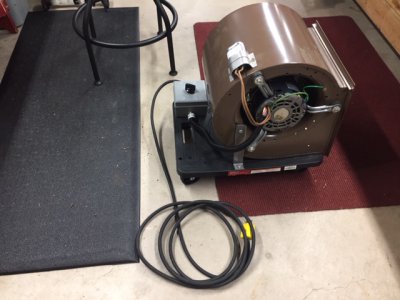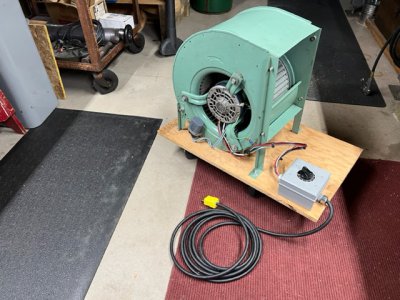- Joined
- Dec 20, 2021
- Messages
- 1,050
Neat project!
My guess is looking at something like a furnace blower will get you closer to where you want to be. Big furnace blowers are both large in diameter and long axially. They can move a lot of air.
FYI. I use four 140mm PC fans to control ventilation in one of my shops. Bought a 5 pack off amazon. Didn't need much pressure rise, so these work well. It's for a parasitic system that derives heating/cooling from the house HVAC. An Arduino controlled damper and fans control air movement, to try to keep temperature to within a couple of degrees.
Pump design takes into account the operating point or load point of the fan. In your case you want a lot of volume and probably low pressure. A leaf blower is the opposite, less volume but higher pressure. Designing a fan for high pressure rise if it's not needed will most like just use more power than necessary.That brings up a very good point, altering the back-pressure.
My guess is looking at something like a furnace blower will get you closer to where you want to be. Big furnace blowers are both large in diameter and long axially. They can move a lot of air.
FYI. I use four 140mm PC fans to control ventilation in one of my shops. Bought a 5 pack off amazon. Didn't need much pressure rise, so these work well. It's for a parasitic system that derives heating/cooling from the house HVAC. An Arduino controlled damper and fans control air movement, to try to keep temperature to within a couple of degrees.





